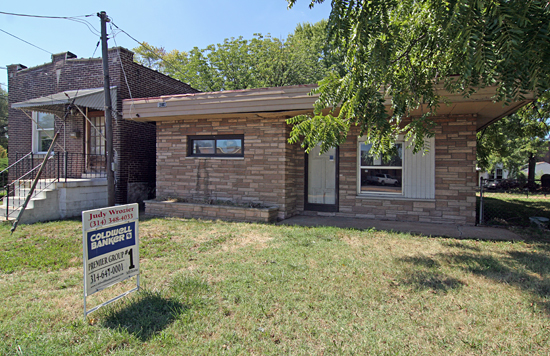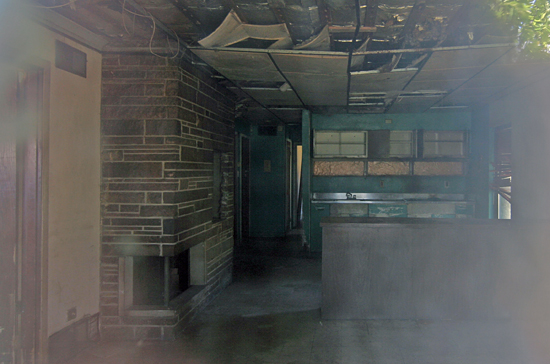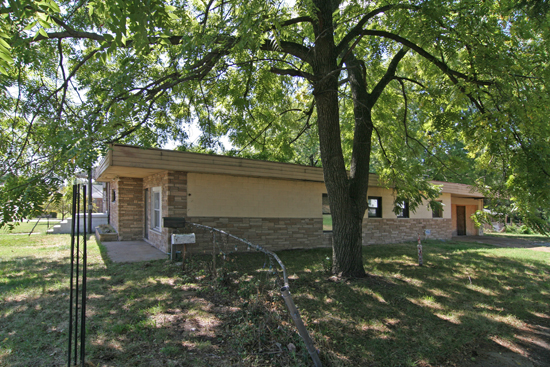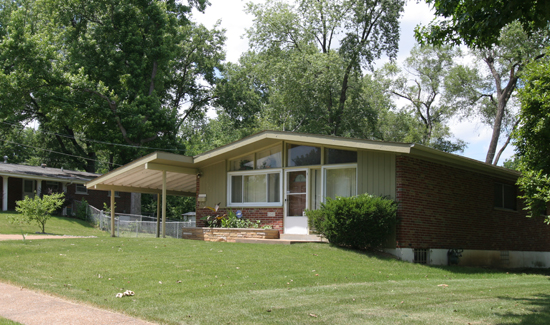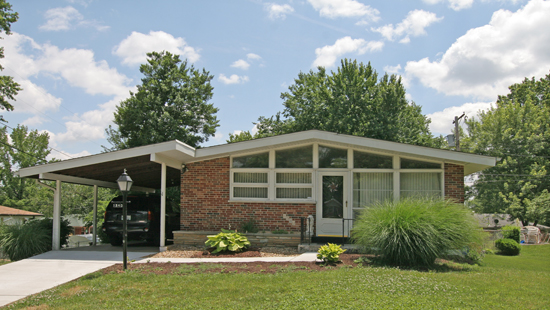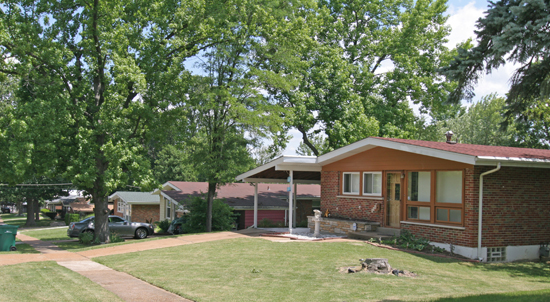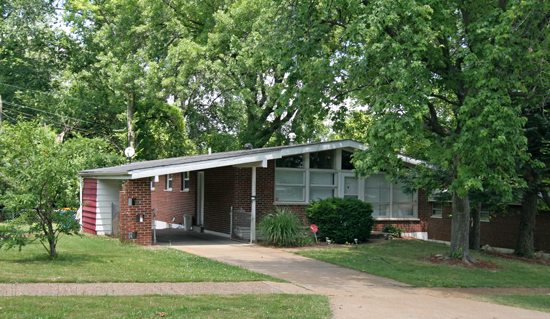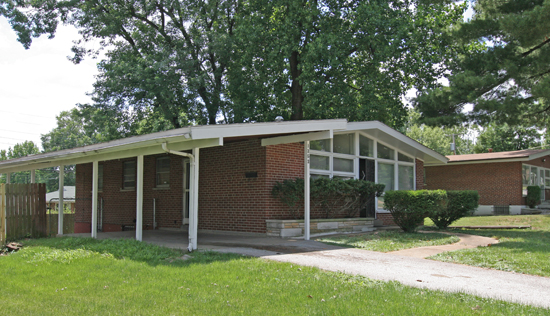4084 Meramec
South St. Louis City
This 1956 mid-century modern home plunked down in the middle of pre-WW2 homes in deep South St. Louis has been covered before. Scroll down half way at this link.
It is now for sale. Here’s the info.
The home is a $19,900 As Is foreclosure that needs a lot of work. Neglect has led to much water damage and remuddling. The extra photos that the realtor includes work hard to avoid revealing its raggedy shape, though the price is a dead giveaway. Here’s one photo that was not included:
Sorry it’s such a crappy photo. It was taken through an encrusted window. But it does show that some of the original mid-century fabric remains. This is exactly the type of information that someone interested in rehabbing an MCM home would want to know: is there something there that’s worth my money and effort?
One highly unusual (thus admirable) aspect of this listing is that the realtor does NOT ever use the phrase – or even imply – “tear down.” Homes of this vintage are regularly classified as tear downs, especially when they are in desirable zip codes on land that is, on paper, more valuable than the house.
But if a home is in good condition, isn’t it a bit manipulative to call something a “tear down?” It’s a bit of judgement casting, an assumption that everyone who runs across the listing will think that a mid-century modern home is horrid.
I completely understand the financially-motivated aspects of labeling a home a tear down. Everyone involved in the sale wants to get paid. But marketing has a very powerful influence everywhere, including real estate. How many under-performing stick-and-tissue new build homes in the deep exurbs have been purchased based on painting a pretty picture? And rechristening condos as villas has brought new life to a traditional form of high-density, low maintenance living. So words matter, and some aspects of pegging mid-century homes for demolition is absolutely suggestive selling.
It is a fact that any home that you’re not the first owner of is going to need some remodeling. The cost of changes you intend to make are typically factored into what you’re willing to pay for a home. And there are millions of buyers who want to rehab a home, either to their liking or back to its historical authenticity. We all understand this as a selling feature for pre-WW2 homes. But in the world of the Multiple Listing Service (MLS), they are quick to label homes from after WW2 to the 1970s as tear downs.
Actually, the MLS has yet to upgrade their descriptions so a realtor can choose phrases like “mid-century modern” or “modern ranch” as a choice for the style of home. It is a fact that sympathetic realtors and MCM-motivated buyers have to comb through mountains of homes by age to zero in on what is wanted. Why is an easily-identifiable group of willing buyers left to work so hard to find their home? Is it that difficult to add some new style categories to the MLS?
It always boils down to education. And in the case of real estate, realtors who can identify and serve this new subset of mid-century modern buyers will emerge financially victorious. Wouldn’t other realtors, logically, like to benefit from this as well? So that’s the argument for updating the MLS: do you wanna get paid? MCM lovers are willing to pay.
MCM Realtors in St. Louis
In St. Louis, we do have some enlightened realtors that know their MCM and the audience who wants to buy them.
• Shannon Howard highlights St. Louis Homes with Soul on her realtor website. She also gives in-depth heads-up on her NOCO site, like this amazing MCM in Ferguson.
• Ted Wight knows a good MCM home when he sees one, and shares sales info and amazing photos of such on his blog, St. Louis Style. He also walks the talk, having just recently purchased a William Bernoudy home, making him a realtor who is also saving mid-century homes in desirable locations from being torn down.
• Ginger Fawcett knows a good MCM when she finds it. Here’s her LiveLocal. And her frustration at MLS listings making it difficult to ID mid-century homes motivated her ModernSTL board membership. Ginger’s desire is to educate fellow realtors about the MCM market, which then advocates changes in how these homes are listed. Her educational activities include a Parade of Homes, where multiple realtors put their MCM homes on an open house tour so MCM buyers can see multiple, desirable properties in one day.
If you’re in the market for a Metro St. Louis mid-century modern home, these are the three realtors that I know who fully understand what you’re looking for, and can ease the burden of what is, typically, a time-consuming MLS search.

